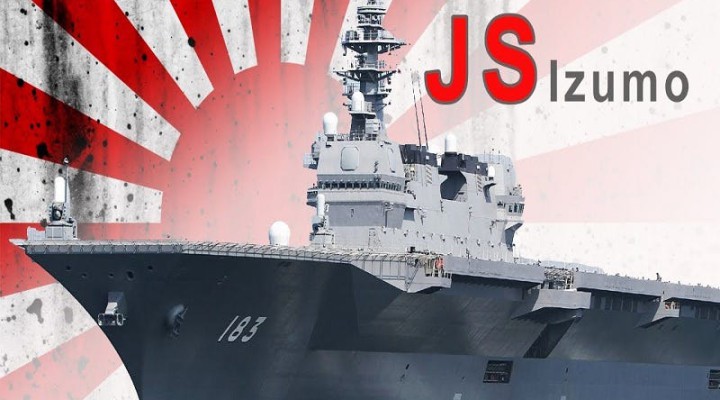Japan’s Participation In This Week’s Reported South China Sea Drills Sends Five Messages

Japan’s new military role in the Asia-Pacific is unprecedented in the post-war period, but it’s approved by America so as to prepare its “unsinkable aircraft carrier” for the scenario of intervening against China in Taiwan, which its Defense Minister told British media in late July could take arms and/or logistical forms.
The Associated Press quoted two unnamed Philippine security officials to report that the US will lead joint drills with Australia and Japan in disputed South China Sea waters off their country’s coast this week. The US will dispatch an aircraft carrier while the other two will send helicopter carriers. The report also claimed that the drills were planned a few months ago and thus supposedly aren’t connected to the recent Sino-Filipino incident. Tokyo’s involvement is significant since it sends the following five messages:
———-
1. Japan Wants To Enforce The US’ “Rules-Based Order” In The Asia-Pacific
Japan’s post-war pacifist constitution places strict limits on the conduct of its armed forces, but the notion of it nowadays defending the US’ “rules-based order” is being exploited as the pretext for accelerating its already ongoing remilitarization and expansion of military influence in the Asia-Pacific.
2. This Task Aligns With Its Leader’s Previously Elaborated Hegemonic Vision
The abovementioned role was entirely foreseeable if one took the time to read through Prime Minister Fumio Kishida’s de facto manifesto that he shared in mid-January while speaking at Johns Hopkins University, which essentially elaborated his hegemonic vision for Japan and was analyzed at length here.
3. Kishida Had Just Agreed In DC Several Days Ago To Oppose China’s Claims
The Japanese leader was just in DC late last week where he and the South Korean President promised in their “Spirit of Camp David” joint statement with Biden to oppose China’s territorial claims, which Kishida is now swiftly executing in a show of fealty to his country’s patron that raises serious suspicions.
4. The Timing Of Events Suggests Extensive Coordination Behind The Scenes
In retrospect, the recent Sino-Filipino incident that was sparked by Manila’s failed attempt to smuggle construction materials to a disputed reef could have been timed to precede the latest trilateral talks and this week’s joint drills, thus enabling them to be spun as defense measures instead of provocations.
5. Japan’s “Self-Defense Forces” Will Now Defend The Philippines’ Territorial Claims
All of this leads to “pacifist” Japan saber-rattling against China in its South Sea on the Philippines’ behalf in support of their shared US patrons’ “rules-based order”, which solidifies their nascent trilateral alliance that was analyzed here and consequently advances the AUKUS+ agenda of “containing” China.
———-
Japan’s new military role in the Asia-Pacific is unprecedented in the post-war period, but it’s approved by America so as to prepare its “unsinkable aircraft carrier” for the scenario of intervening against China in Taiwan, which its Defense Minister told British media in late July could take arms and/or logistical forms. This is the main message that’s being conveyed by Japan’s reportedly upcoming show of force in the more distant South China Sea, and it’s one that the world shouldn’t ignore due to its dire implications.
https://korybko.substack.com/p/japans-participation-in-this-weeks
 TheAltWorld
TheAltWorld 
0 thoughts on “Japan’s Participation In This Week’s Reported South China Sea Drills Sends Five Messages”